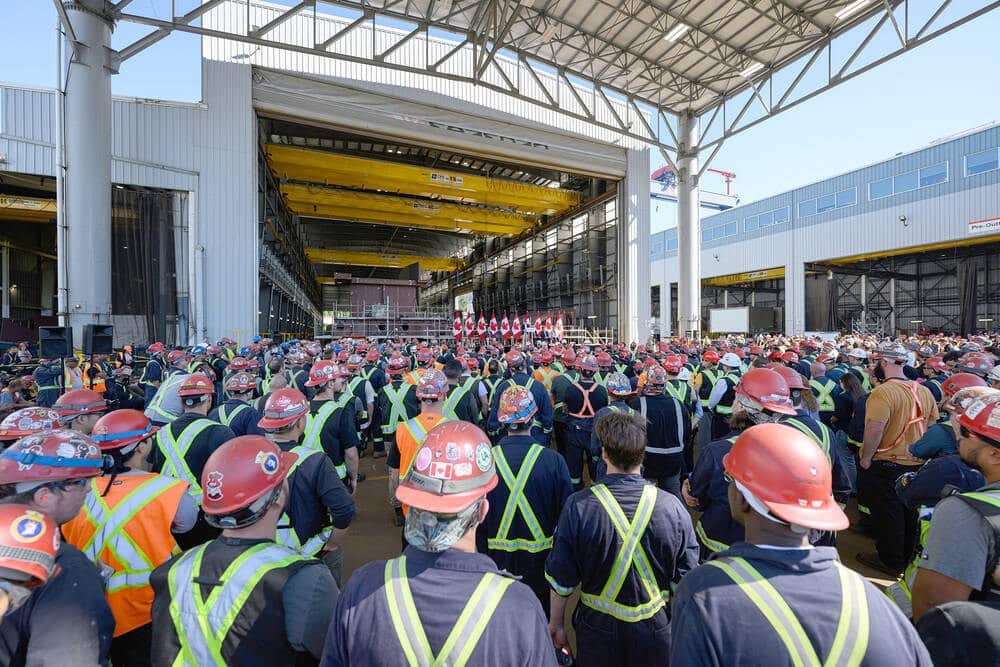Feds and Seaspan celebrate major shipbuilding milestone
Shipbuilding Boom Revitalizes West Coast Economy

The West Coast shipbuilding industry is experiencing a remarkable resurgence, thanks to the federal government’s commitment to renewing its navy and coast guard fleets. Celebrating 15 years of the National Shipbuilding Strategy (NSS), Seaspan’s Vancouver Shipyard has become a hive of activity, with operations expected to remain at full capacity until at least 2029. This revitalization marks a significant turnaround for an industry that once faced dire challenges.
A Transformative Strategy
The NSS was launched in 2010 under the leadership of then-Defence Minister Peter MacKay, who recognized the urgent need to modernize Canada’s naval capabilities. Seaspan, a key player in this initiative, received its first major contract worth $8 billion in 2011 to construct a variety of vessels, including coast guard and icebreaker ships. This procurement package was unprecedented in British Columbia and marked a critical turning point for the West Coast shipbuilding sector.
Since the inception of the NSS, Seaspan has undergone extensive upgrades, including the construction of a massive gantry crane, known as Big Blue, which has become a landmark in North Vancouver. The workforce at Seaspan has expanded dramatically, growing from around 100 employees in 2010 to over 3,300 today, making it the largest employer in the North Shore region. The NSS has also injected approximately $15.27 billion into Pacific region companies, significantly altering the industry’s landscape.
Seaspan CEO John McCarthy expressed optimism about the future, stating, “The state of shipbuilding in Canada right now is very encouraging.” He emphasized the importance of the skilled workforce in driving the company’s success and reaffirmed Seaspan’s commitment to meeting Canada’s naval needs domestically.
Economic Impact and Future Prospects
The NSS has not only revitalized shipbuilding but has also had a substantial economic impact. The federal government estimates that the strategy has contributed $38.7 billion to Canada’s GDP and has created or sustained around 21,400 jobs annually from 2012 to 2025. This growth is evident in the ongoing projects at Seaspan, which include the construction of two joint support ships for the navy and the development of modern offshore vessels for the coast guard.
During a recent ceremony at Seaspan, Joël Lightbound, Minister of Government Transformation, highlighted the strategy’s dual benefits: modernizing Canada’s naval fleet while revitalizing the marine industry. He stated, “The ships built at Seaspan and other Canadian shipyards reflect a long-term investment in innovation, sovereignty, and industrial growth.”
Local leaders, including North Vancouver Mayor Mike Little, have praised Seaspan’s role in the community, noting that its success has attracted top talent to the region. However, the rapid growth of the shipbuilding industry has also contributed to increased traffic congestion, prompting discussions about enhancing public transit options for residents and commuters.
As Seaspan continues to expand its capabilities and fulfill its contracts, the future of the West Coast shipbuilding industry looks promising, with ongoing projects poised to further solidify Canada’s position as a leader in marine construction.
